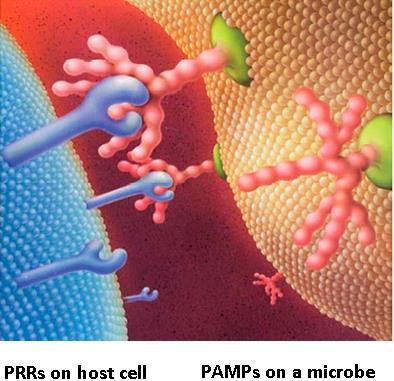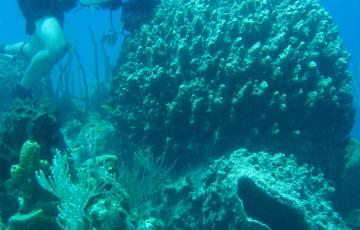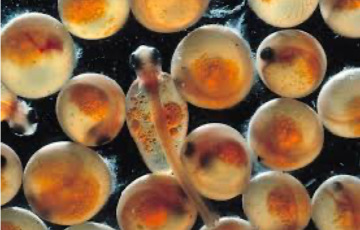The Innate Immune System
To download the activity page, click here.

The innate immune system is the first line of defense against pathogenic microbes entering the body. It is shared by shellfish (oysters and crabs), finfish (salmon and striped bass), and humans. These organisms rapidly respond to an incoming pathogen by producing specialized molecules called pattern recognition receptors (PRRs) that recognize and bind to unique structures on the surface of a pathogen known as pathogen-associated molecular patterns or PAMPs. The resulting binding of a PRR to a PAMP can cue the specialized immune cells to eat and kill the pathogen.
The Vasta Lab at IMET studies a specialized class of PRRs called lectins that have the ability to bind distinct sugar-molecules (the PAMPs) on the surfaces of pathogens like viruses and bacteria. Specifically, we study the role of a particular lectin called galectins against infections by influenza virus in humans, IHNV in commercial salmon, and Perkinsus parasites in oysters and clams. We use a range of approaches like comparative immunology, genetics, cell culture, recombinant DNA technology, transcriptomics and glycomics.
Why is this research important?
Several bacteria, viruses, and parasites cause life-threatening diseases in humans, and also cause damage to the aquatic environment and serious financial losses to our seafood industry by infecting oysters, crabs, and salmon, among other important animal species. By uraveling PAMP-PRR interactions along with other aspects of innate immunity, we can contribute to new and better therapeutic interventions to save human lives, protect environmentally important aquatic species, and enhance food security.
Try your hand at matching PAMPs and PRRs in this activity.


